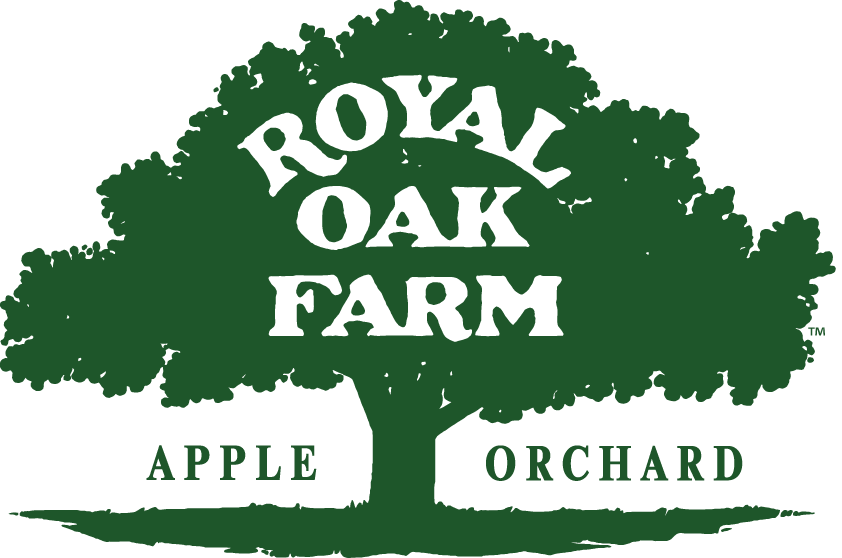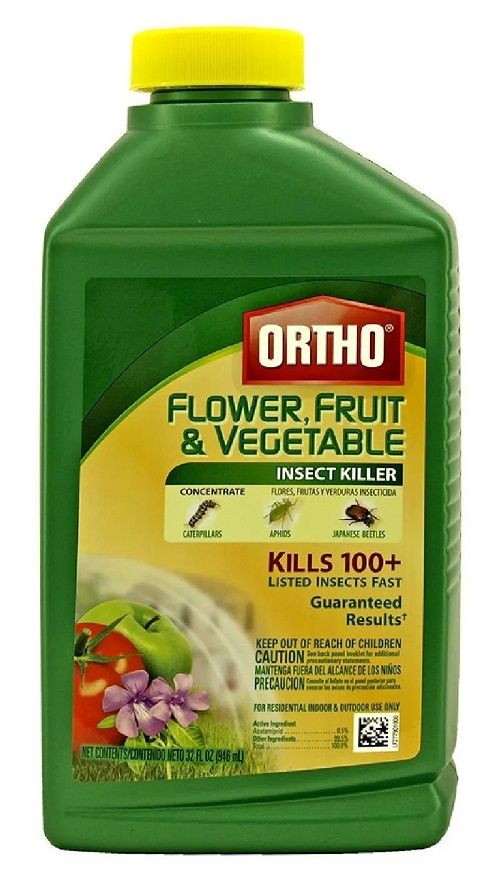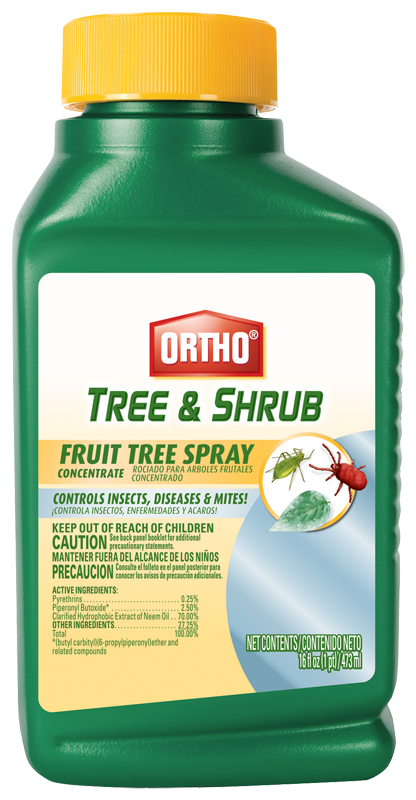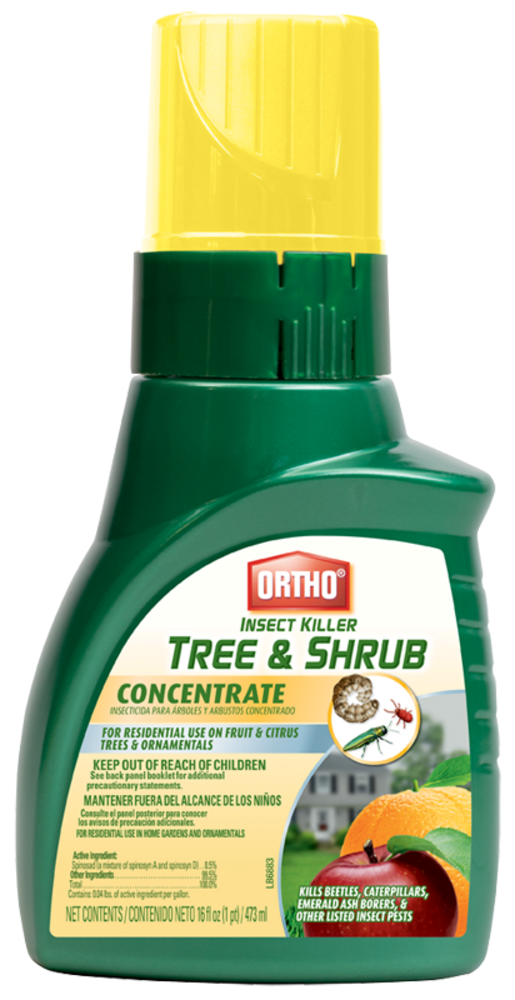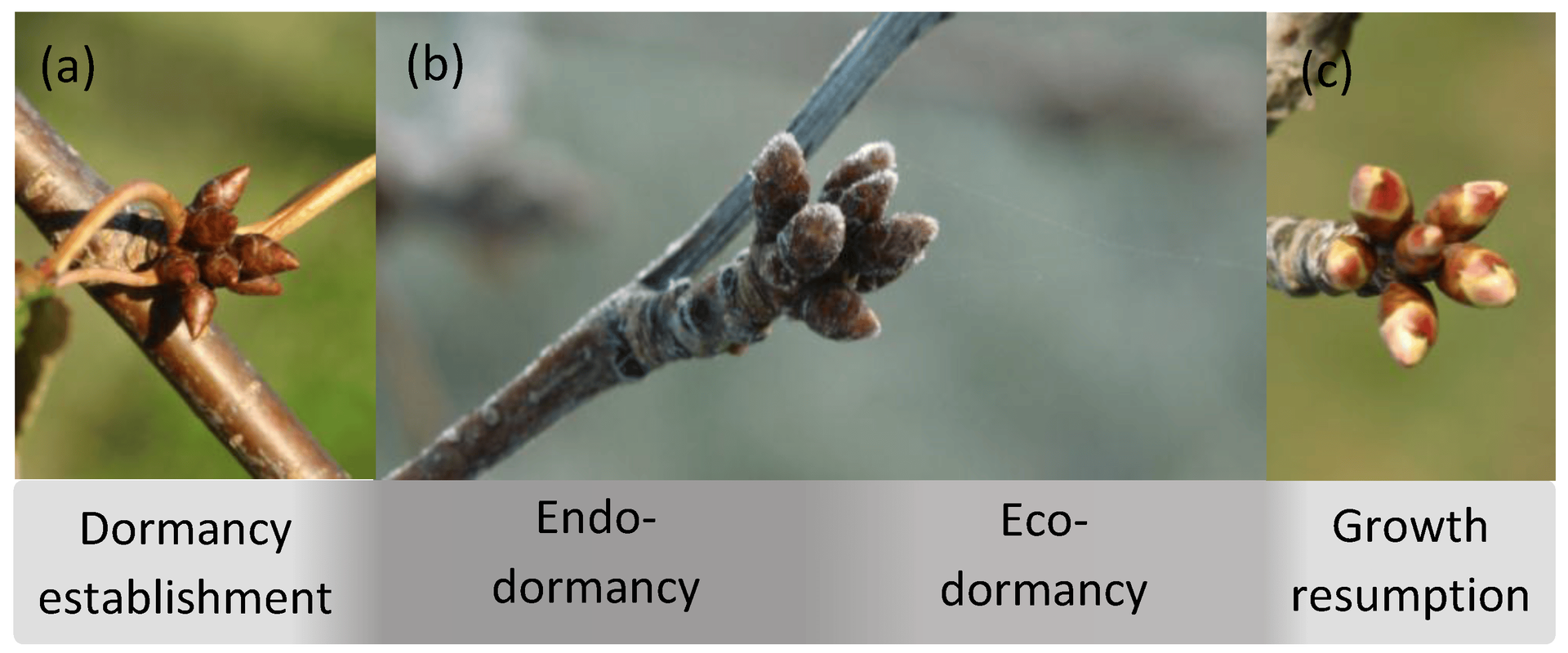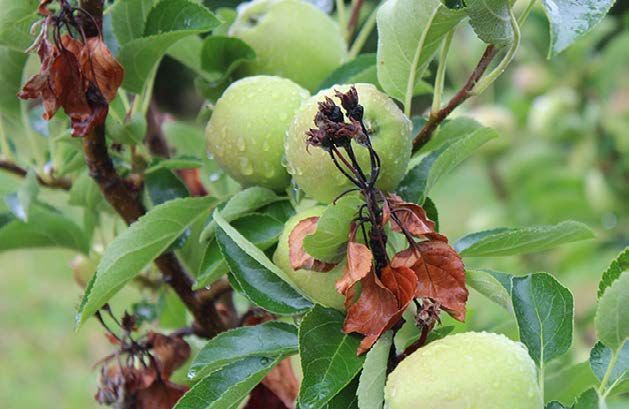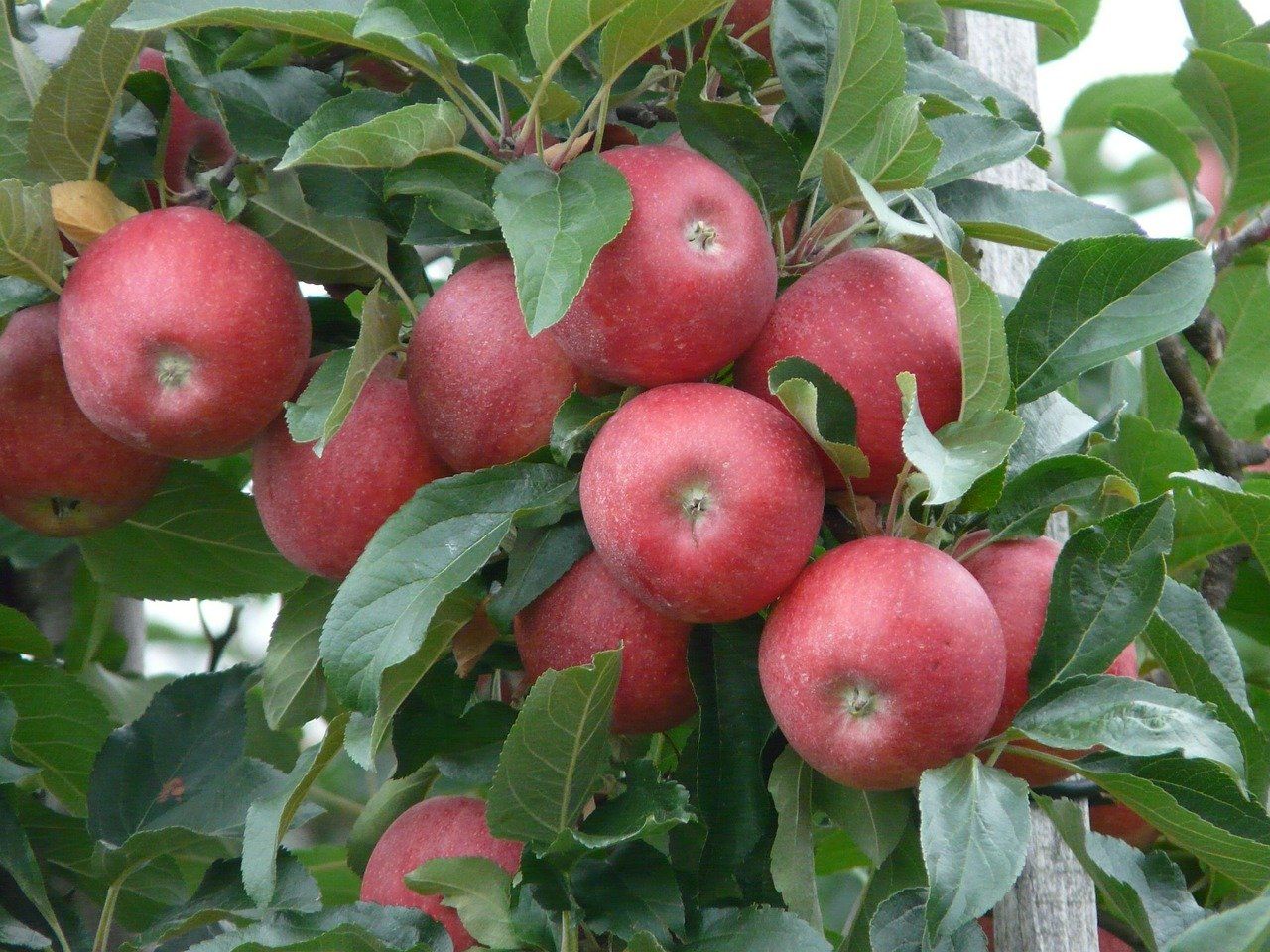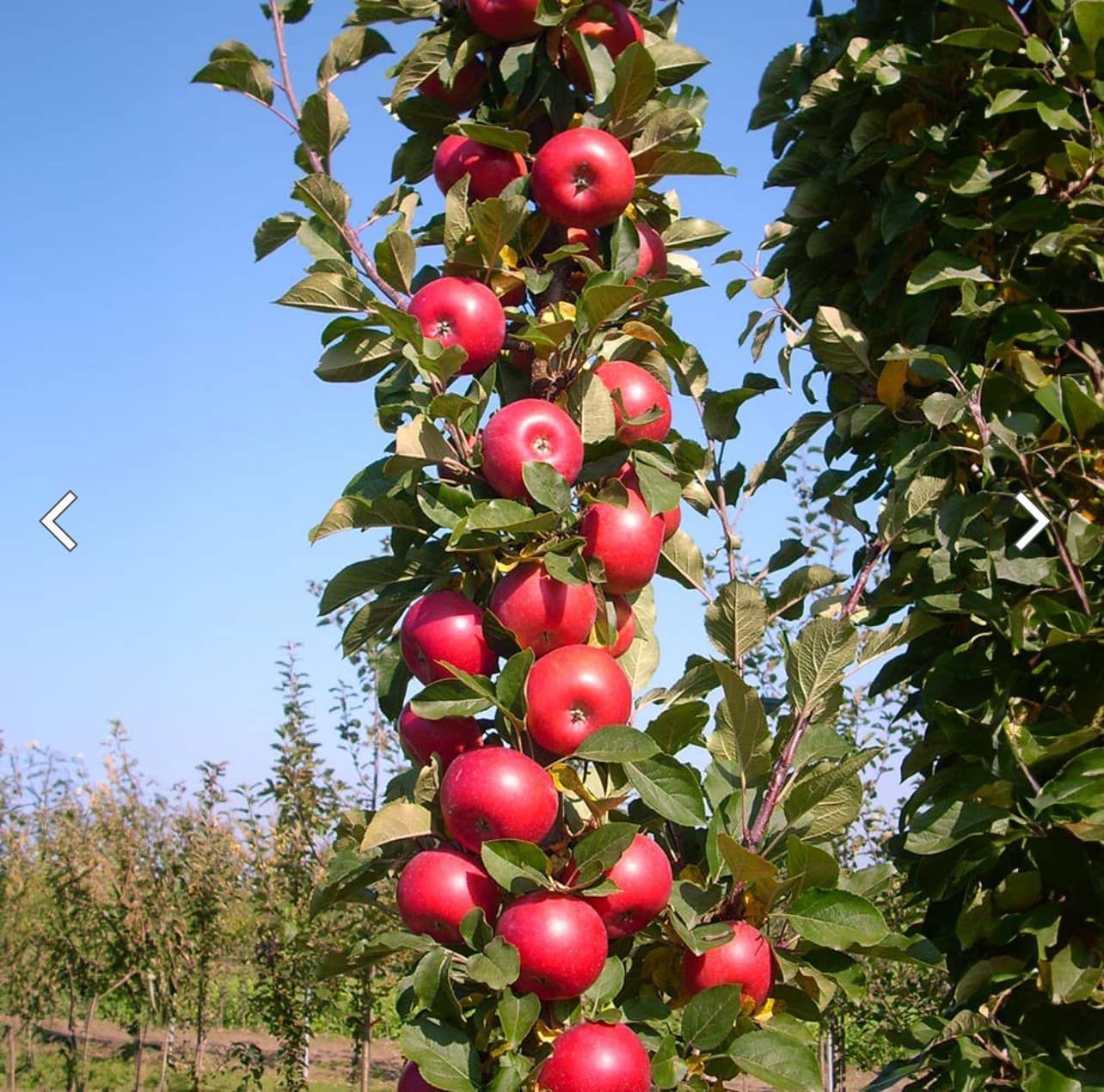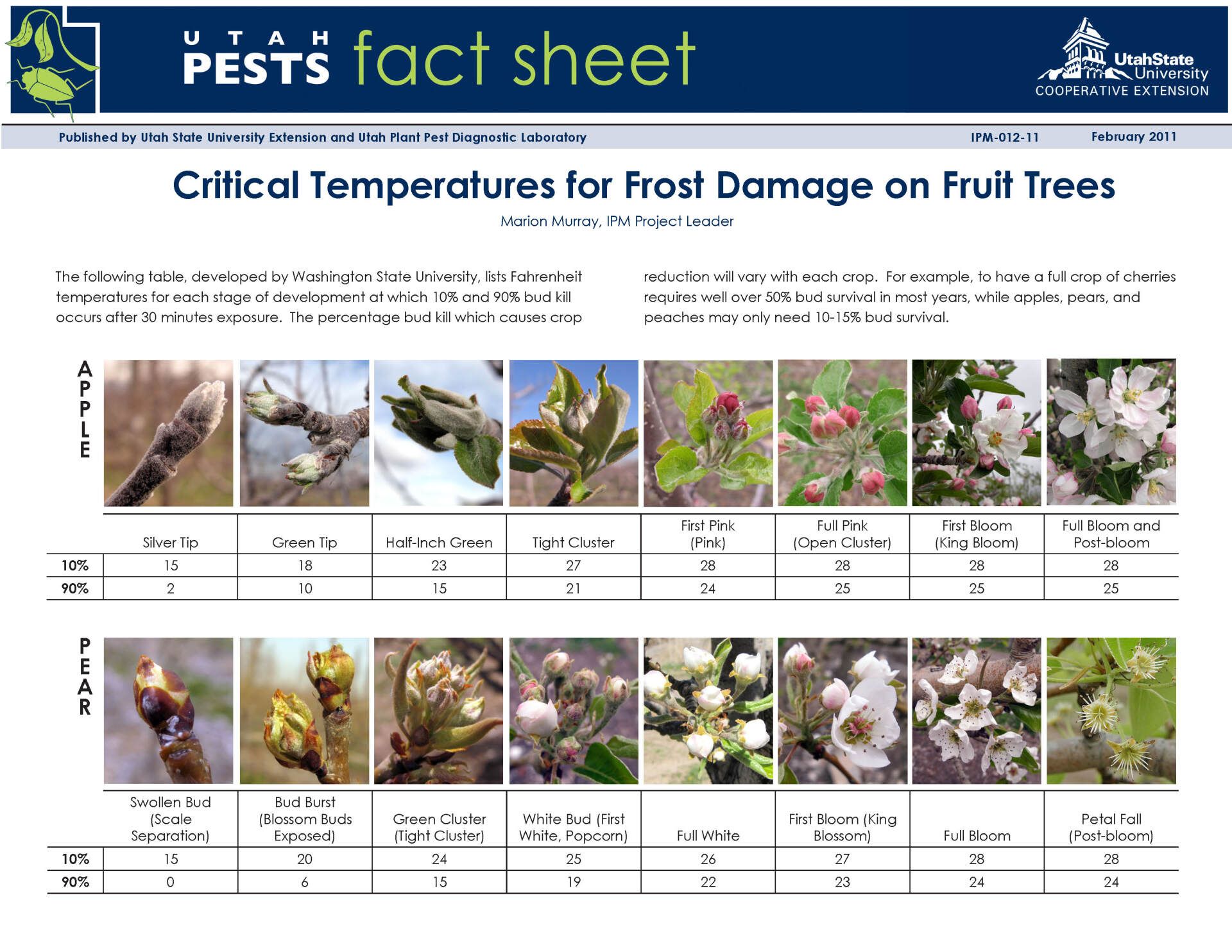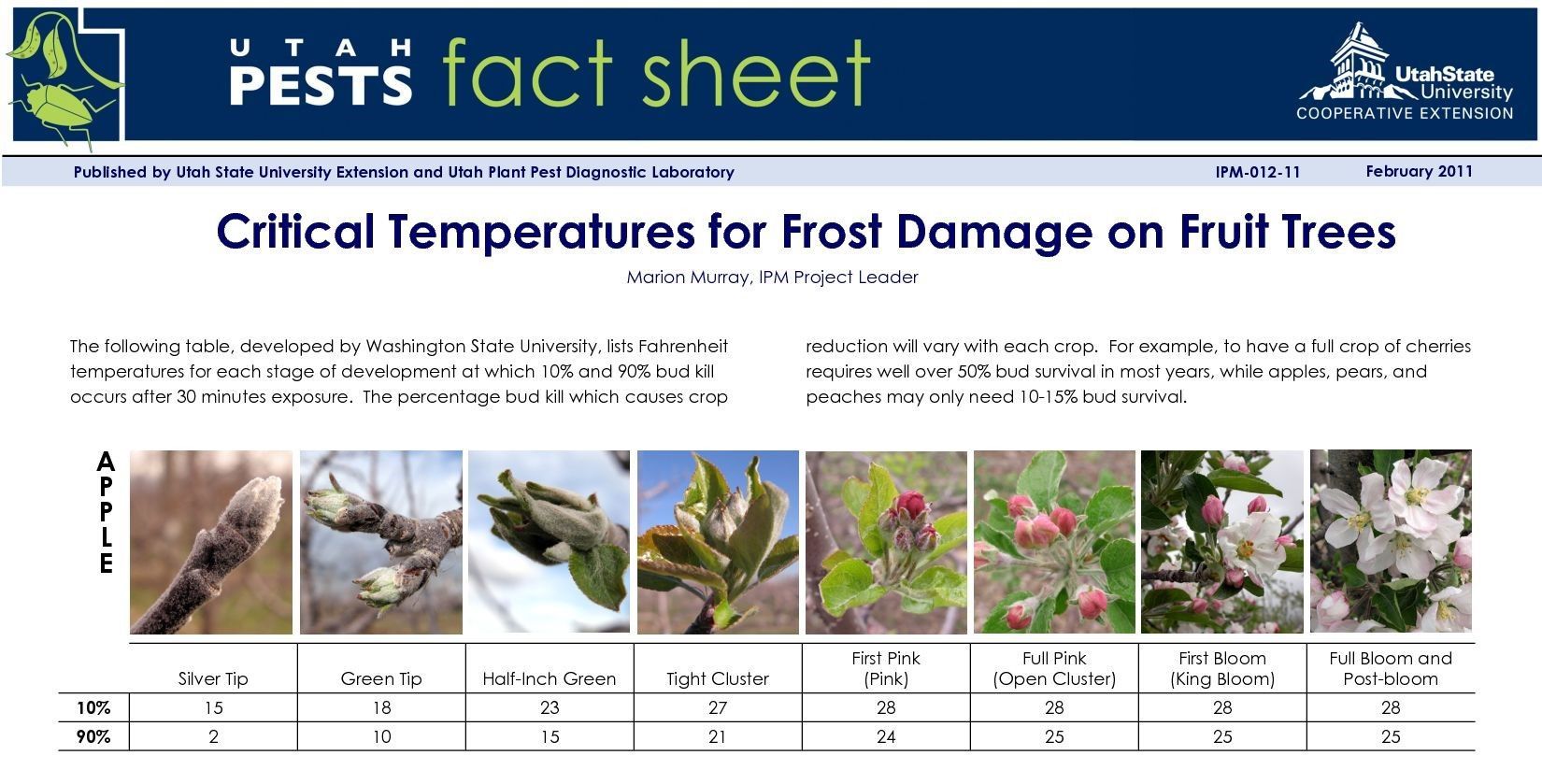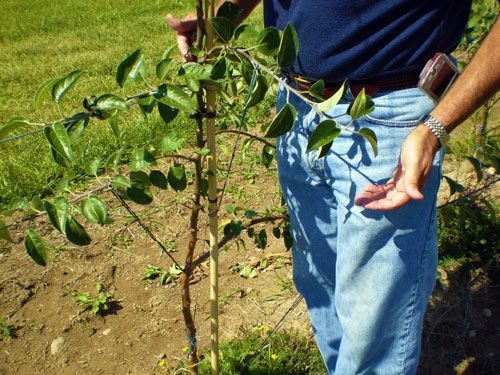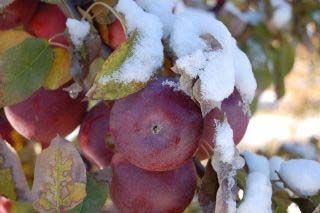Several insecticides can be used for Japanese beetle control including those used for codling moth and apple maggot control like acetamaprid. There are others like Sevin, but I do not recommend the use of Sevin since it is toxic to bees and to beneficial insects and can act like a fruit thinner on your fruit, causing you to lose your fruit in excessive heat. Acetamiprid is a soft, conventional control and is available as Ortho Flower, Fruit & Vegetable Insect Killer (left). This is a concentrate product that contains 0.5 % acetamiprid, a synthetic organic compound of the family of chemicals that acts as neonicotinoid insecticides. Acetamiprid is a contact insecticide for sucking-type insects and can be applied as a foliar spray or a soil treatment. When sprayed in the evening at sunset, it will not harm bees or other beneficial insects.
Fighting Japanese Beetle
Fighting Japanese Beetle

Japanese Beetle emergence has begun here in Northern Illinois, and beetles have been spotted in other locations of the Midwest and elsewhere by home growers. Once Japanese Beetle have emerged in one location, it is only a matter of time before it emerges in another. They tend to gravitate to Honeycrisp trees first (Figure 1). Due to the large amount of carbohydrates produced by the Honeycrisp trees, which is what makes the variety so sweet, the Japanese Beetle is seemingly attracted to it just like we are! Honeycrisp seem to be the first leaves that attract them and then they move on to raspberries and several other berry and apple varieties.
Monitoring for Japanese Beetle
Adult Japanese beetles emerge from the soil and live from 30 to 45 days feeding on plants over a four-to-six-week period. The adults produce aggregation pheromones that attract individuals (both males and females) to the same feeding location. Adults can fly up to five miles to locate a feeding site; however, they tend to fly only short distances to feed and lay eggs. The adult beetles normally emerge during the last week of June through July. The first beetles out of the ground seek out that suitable food , like Honeycrisp, and begin to feed. These early arrivals then begin to release that aggregation pheromone (odor) that attracts additional adults. Newly emerged females also release a sex pheromone that attracts males. After feeding and mating for a day or two, the females burrow into the soil to lay eggs at a depth of 2 to 4 inches. Females lay 1 to 5 eggs before returning to plants to feed and mate. This cycle of feeding, mating and egg laying continues until the female has laid 40 to 60 eggs. Most of the eggs are laid by mid-August though adults may be found until the first frost. The eggs hatch in 8 to 14 days and the first instar larvae dig to the soil surface to feed on roots and organic material. The first instars shed their skin (molt) in 17 to 25 days. The second instars take 18 to 45 days to mature and molt again. Most of the grubs are in the third instar by late September and by October they dig deeper into the soil to overwinter. The grubs return to thesurface in the spring as the soil temperature warms, usually in mid-April. The grubs continue their development and form a pupa in an earthen cell 1 to 3 inches in the soil.
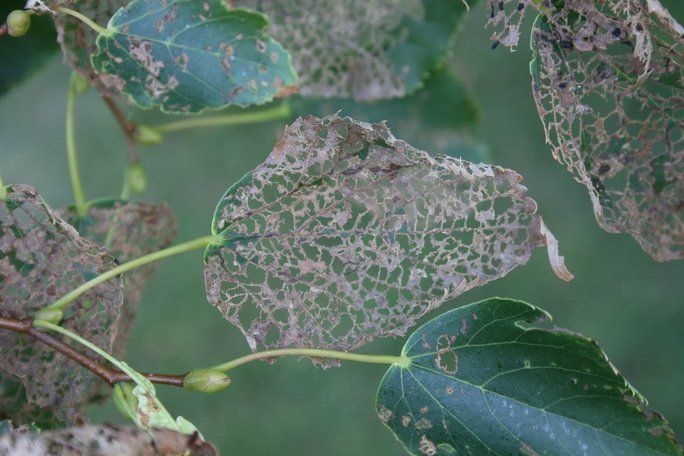
When you see those first few beetles, that is the time to begin your plan of attack. Those first few beetles are the food source scouts that will emit the aggregation pheromone letting other beetles know that a feast is on! The Japanese beetle adults feed through the upper leaf surface (epidermis) and leaf center (mesophyll), leaving the lower epidermis intact. Adults usually avoid feeding on tissue between leaf veins, resulting in leaves appearing lace-like or skeletonized (Figure 2). Controlling those first few beetles can give you a head start on stopping the feeding/mating cycle.
Control for Japanese Beetle
Japanese beetles generally emerge at temperatures above 70 degrees Fahrenheit -- preferring much warmer temperatures of 85-95 degrees. They are most active on warm, sunny days between 9 a.m. and 3 p.m. Humidity of 60% or higher retards their flying and induces heavy feeding and destruction.
There are some control options for the adult life stage. One is physical removal and/or trapping of adults: Removing beetles by hand, or trapping, may provide adequate protection for small plantings when beetle numbers are low. However, Japanese beetle adults are capable of migrating from other areas, and the presence of beetles on or near a plant will attract more beetles. Consequently, use of Japanese beetle traps often attracts more beetles, and results in subsequent damage to plants.
The other alternative is chemical control of adults. Several insecticides are labeled for use against adult Japanese beetles. Always follow label directions. Typically, this may entail 2 treatments during the peak beetle flight. Homeowners should make their first application before damage becomes intolerable and beetles are still abundant. The need for repeated applications can be curtailed by inspecting plants for additional beetle damage prior to applying a second treatment. Neem products containing Azadirachtin can be effective repellents that can reduce defoliation when applied regularly (but no more than weekly) during beetle flight. Apply before defoliation becomes intolerable. In years when beetle populations are very high, noticeable defoliation may occur because adults will consume a small amount of insecticide tainted leaves before they are killed. Treat foliage and flowers thoroughly. For optimal control, apply in the late afternoon when beetles are most active.
I have been informed by Ortho that their Flower, Fruit and Vegetable Spray has been discontinued, as have all their products containing acetamiprid, although there may be several retailers that have inventory on hand like eBay or The Seed Ranch.
Ortho has replaced this product with two new products, Ortho Tree & Shrub Fruit Tree Spray Concentrate and
Ortho® Insect Killer Tree & Shrub Concentrate.
For further reading on Japanese Beetle, refer to this article by Rufus Isaacs and John Wise from Michigan Sate University: Managing Japanese Beetles in Fruit Crops.
This publication contains pesticide recommendations that are subject to change at any time. These recommendations are provided only as a guide. It is always the pesticide applicator's responsibility, by law, to read and follow all current label directions for the specific pesticide being used. Due to constantly changing labels and product registration, some of the recommendations given in this writing may no longer be legal by the time you read them. If any information in these recommendations disagrees with the label, the recommendation must be disregarded. No endorsement is intended for products mentioned, nor is criticism meant for products not mentioned. The author assumes no liability resulting from the use of these recommendations.
Backyard Orchard Management @ Royal Oak Farm Orchard
Backyard Orchard Management @ Royal Oak Farm Orchard is a blog for the home fruit tree grower providing information about fruit tree management, fruit tree pruning & training and Integrated Pest Management from the IPM Specialist and Certified Nurseryman at Royal Oak Farm Orchard, a 22,000 tree apple orchard and agri-tourism operation located in Harvard, Illinois.
Click or tap any title to read that post.

